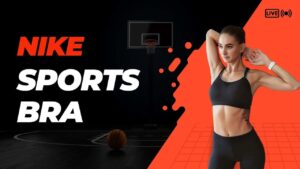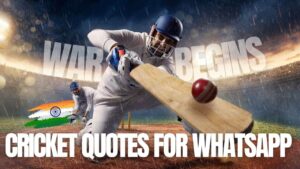Visual Skills For Sports: Boost Your Performance
Did you know that over 80% of the sensory information our brain processes is visual? Yet, many sports training programs ignore the importance of visual skills. These skills are key to doing well in sports. As we head into the 2024 sports season, it’s time to focus on improving your visual skills. This can give you an edge over your competitors.
Key Takeaways
- Visual skills like timing, balance, eye-hand coordination, and reaction speed are essential for sports performance.
- Sports vision training can significantly enhance these visual abilities, giving athletes a distinct advantage.
- The Edge Trainer from Vizual Edge offers a personalized, web-based program to improve visual skills in just 15 minutes, 3 times a week.
- Investing in your visual skills can lead to improved focus, confidence, and mental toughness on the field.
- Vision training also plays a role in injury prevention, helping athletes anticipate and react to their environment more effectively.
The Importance of Visual Skills in Sports
In sports, visual skills are key to an athlete’s success. Over 80% of what we sense comes from what we see. This shows how vital our eyes are in sports.
Many athletes don’t work on their visual skills, even though they’re crucial. Research shows athletes and non-athletes see things differently. These differences can affect how well they do in sports.
Visual Skills Impact Athletic Performance
Visual skills help athletes track fast balls and guess what opponents will do next. They’re vital for success in sports. For example, a basketball player needs to read the court well, a baseball pitcher must hit the strike zone, and a tennis player must react fast to a serve.
Studies find athletes with better visual skills perform better. They have better timing, balance, and coordination. These skills help them make quick decisions and beat their opponents.
| Visual Skill | Impact on Sports Performance |
|---|---|
| Dynamic Visual Acuity | Tracking fast-moving objects, anticipating ball trajectories |
| Contrast Sensitivity | Identifying targets in varying light conditions |
| Depth Perception | Judging distances, timing jumps and landings |
| Visual Reaction Time | Quickly responding to changing game situations |
Understanding the role of visual skills in sports helps athletes and coaches. They can create training plans to improve these skills. Better visual skills can give athletes an edge and help them excel in their sports.

Nike Sports Bra: Ultimate Comfort & Support for Every Workout 2024


Choosing the Perfect Cricket Bat Weight: A Guide for Every Player in 2024
What is Sports Vision Training?
Sports vision training helps athletes improve their visual skills for better sports performance. Programs like the Edge Trainer from Vizual Edge focus on key skills. These include timing, balance, eye-hand coordination, and reaction speed.
Enhance Timing, Balance, Eye-Hand Coordination
Just 15 minutes of sports vision training three times a week can give athletes an edge. These exercises boost the brain’s ability to handle visual info. This leads to better timing, balance, and eye-hand coordination.
This is great for sports like baseball, tennis, or basketball that need precise movements and quick reactions.
Improve Positional Awareness, Reaction Speed
Sports vision training also boosts the mental game. It helps with better positional awareness and reaction speed. Players can then predict their opponents’ moves and make fast decisions.
This is crucial in fast-paced sports where quick decisions can change the game.
“Sports vision training has been a game-changer for me. The exercises have significantly improved my timing, balance, and eye-hand coordination, giving me a real advantage on the court.” – Professional Basketball Player
Benefits of Imagery and Visualization
Athletes use imagery and visualization to boost their sports performance. These mental tools help top athletes focus on their strengths and work on their weaknesses. They also help athletes stay motivated during training and competitions.
Improve Focus, Confidence, and Mental Toughness
Imagery and visualization help improve focus, confidence, and mental toughness. These are key for doing well in sports. When athletes see themselves performing well in their mind, they’re more likely to do it for real.
This focus and confidence are crucial in stressful situations. Being calm and composed is very important.
Speed Up Progress and Skill Development
Imagery and visualization also help athletes speed up progress and skill development. They practice the details of their sport in their mind. This strengthens their brain and muscles, making skills better and faster to learn.
This is especially helpful for complex skills that need a lot of practice.
“Visualization is the most powerful mind tool we have for creating what we want in our lives.” – Tony Robbins
By using imagery and visualization, athletes can reach their mental potential and perform better. The benefits of mental imagery for athletes are well-known. So, more athletes are using these visualization techniques to improve sports performance.
visual skills for sports
Whether you’re a young athlete or a top competitor, improving your visual skills can change the game. Sports vision training programs help you reach your full potential and boost your performance. They make you faster, more accurate, and better at making quick decisions.
Vision Training Programs for Various Sports
Many sports benefit from vision training, like baseball, basketball, soccer, and tennis. These programs improve your timing, balance, and coordination. This means you can react quicker, anticipate plays, and make smarter choices. Vizual Edge is one program used by young and professional athletes to enhance their visual skills.
Injury Prevention Through Vision Training
Vision training does more than just improve performance; it also helps prevent injuries. It boosts your visual awareness and reaction time. This reduces the risk of brain injuries and concussions in high-impact sports. Quick reflexes and spatial awareness help you avoid collisions and lessen the impact of sudden hits.
Adding visual skills training for sports to your routine can take your game up a notch or protect your health. Check out the different sports vision training programs out there. See how vision training can prevent sports injuries by improving your visual skills and awareness.
Comparing Visual Skills of Federated and Non-Federated Athletes
Research shows that the visual skills of competitive and recreational athletes are quite similar. Many thought there would be big differences, but there aren’t. Both groups have good oculomotor abilities.
A study looked into how competitive and recreational athletes perform visually. It found no big differences in skills like timing, balance, and reaction speed. This means their visual skills are pretty much the same.
But, we need more research to fully understand this topic. The visual needs of different sports can change a lot. Looking into each sport closely might show more differences in visual skills between athletes.
“The visual skills required to excel in sports are not solely the domain of elite, federated athletes. Our findings suggest that recreational athletes possess comparable visual abilities, challenging the common perception of a distinct gap between the two groups.”
Studying sports vision is important for improving athletic performance. By looking at both types of athletes, we can make training better. This helps athletes at all levels see better and perform better.
Vision Assessment Tests
Testing an athlete’s vision is key to improving their sports skills. A detailed vision test can show how well an athlete sees and process visual information. This helps in making training plans to get better.
Static Visual Acuity
Static visual acuity checks how clear an athlete sees when everything is still. It looks at how sharp their vision is and if they can see small details. Good static visual acuity is needed for things like reading scores or spotting opponents.
Dynamic Visual Acuity
Dynamic visual acuity tests how well an athlete sees while moving. This is vital for sports like baseball, tennis, or soccer where things move fast. It helps coaches see where an athlete needs to get better at tracking fast-moving things.
Contrast Sensitivity
Contrast sensitivity is about seeing differences in light and dark. It’s key for sports played in different lights, like indoors or outdoors. Testing this can show if an athlete has trouble seeing clearly in certain situations.
Stereopsis
Stereopsis, or depth perception, helps athletes judge distances. It’s crucial for sports like basketball, golf, or tennis. Checking this can show if an athlete has issues with seeing depth that might affect their game.
Fixation Disparity
Fixation disparity checks how well the two eyes line up on a target. Good alignment is key for clear vision and avoiding eye strain. Testing this can help spot problems with how the eyes work together.
Visual Memory
Visual memory is remembering and recognizing visual details, like where players are or where a ball is going. Testing this can show how well an athlete makes quick decisions and reacts to the game.
Using these vision assessment tests for athletes, experts can understand an athlete’s types of vision tests for sports and measuring visual skills in sports. This info helps create specific vision training plans to boost an athlete’s visual skills and improve their sports performance.
Conclusion
Visual skills are key in sports. Programs like the Edge Trainer help athletes reach their full potential. They improve timing, balance, and eye-hand coordination.
These programs also boost focus, confidence, and mental toughness. They help athletes get better faster. But, more research is needed to see how different sports affect visual skills.
Tests that check vision are important for making training plans. They help athletes do their best. As sports change, new vision training will be crucial for athletes to excel.
FAQ
What is the role of visual skills in athletic performance?
Our eyes are key to athletic success, as they handle over 80% of what we see. Yet, many athletes don’t train their visual skills. This is a big oversight.
How can sports vision training programs like the Edge Trainer benefit athletes?
Programs like the Edge Trainer boost skills like timing and balance. They also improve eye-hand coordination and spatial awareness. This gives athletes an edge in their sports.
How can imagery and visualization techniques benefit athletes?
Imagery and visualization help athletes focus better and build confidence. They also make athletes faster and more skilled.
Are there differences in the visual skills of federated (competitive) and non-federated (recreational) athletes?
Research shows no big differences in visual skills between competitive and recreational athletes. More studies are needed to look at each sport separately.
What types of vision assessment tests are used to evaluate athletes’ visual skills?
Tests check athletes’ visual, cognitive, and motor skills. They look at static and dynamic visual acuity, contrast sensitivity, and more.



